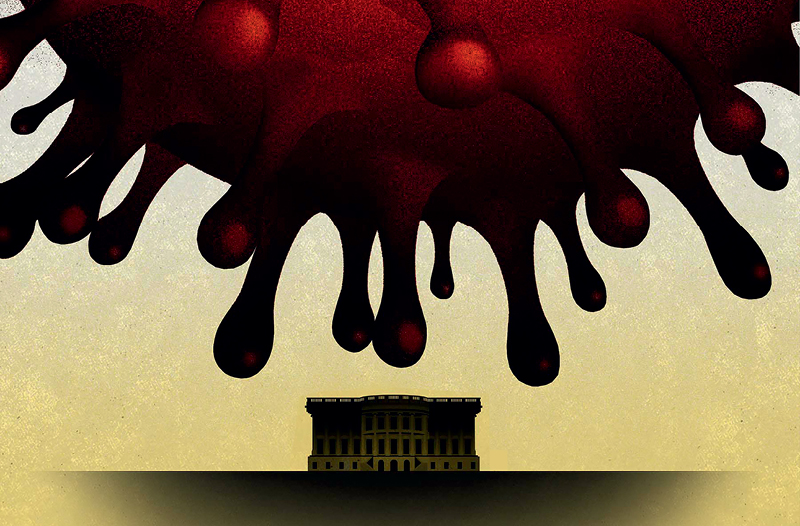
Threats, but Still no Replacement, to the ACA

Unless you’re from Mars, you know that Obamacare is the informal moniker for the Affordable Care Act.
This knowledge wasn’t always as widespread. On the eve of the legislation’s rollout in 2013, late-night talk show host Jimmy Kimmel had some fun by asking random passersby on the street whether they preferred Obamacare or the Affordable Care Act (ACA). Several said they preferred the latter to the former.
Former president Barack Obama’s permanent association with the ACA seems to have particularly irked candidate and President Donald Trump, who has long appeared obsessed with attacking, and wherever possible undoing, Obama’s legacy legislative achievement. Not much has come of that to date: the campaign to repeal and replace the law in 2017 was a spectacular disaster (John McCain’s famous thumbs-down vote in the well of the Senate seems so long ago). Since then, Trump has offered some revisionist history about the ACA. For example, roll the tape from last September’s debate with then-Vice President and Democratic Party presidential candidate Kamala Harris:
Trump: I had a choice to make—do I save it and make it as good as it can be, or do I let it rot? And I saved it.
Moderator Linsey Davis: So just a yes or no, you still do not have a plan?
Trump: I have concepts of a plan.
Just as there was never a coherent strategy for replacing the ACA in 2017, there is no comprehensive plan now or anything approaching a consensus by congressional Republicans on a unifying healthcare package. But months into Trump 2.0, the stakes and potential consequences for healthcare are becoming clearer within the political and legislative theater and the equally consequential regulatory theater.
Political and Legislative Theater
1) Will Republican tax-writers take a stab at scaling back the exemption from taxation for employer-provided group health insurance? The Chicken Little in me would point out that two-thirds of House Republicans are members of the GOP Study Committee, which has advocated for taxing those benefits. The realist in me notes that, to date, no such proposal has emerged on the option sheets that are being parried around by GOP leaders. The Council and employer groups have been doing our jobs to preserve employer-sponsored insurance (ESI). In March, The Council and the American Benefits Council released a definitive study by Ernst & Young on the long-term macroeconomic impacts of a limitation on the tax exclusion. It wouldn’t be pretty: millions of additional uninsured Americans, thousands of fewer available jobs, and billions of dollars of reduced economic activity.
2) The Biden administration’s 2021 American Rescue Plan extended premium subsidies for individuals in ACA health exchanges, and they were extended for another three years under the 2022 Inflation Reduction Act. Two-child couples making four times the federal poverty level—$124,800 a year—now can receive, on average, a 43% reduction in premiums on plans purchased through ACA exchanges. These subsidies are slated to expire at the end of 2025. Republicans in Congress seem determined to let them lapse (saving an estimated $335 billion in costs over 10 years), but there are political risks. Millions of Americans would pay upward of $7,000 more per year for health insurance, and many of them are in ruby-red rural districts.
3) The dizzying array of Trump executive orders and actions by the budget-cutting Department of Government Efficiency (on everything from care for transgender individuals to staffing and funding at agencies including the National Institutes of Health and Centers for Disease Control and Prevention) will impact the healthcare ecosystem in ways known and unknown. The executive order on healthcare transparency perhaps has the greatest impact on the future of ESI. It reinforces rules, put into place during Trump’s first term, that push hospitals and payers to make healthcare prices more transparent—directing the Treasury, Labor, and Health and Human Services departments to rapidly implement and enforce those regulations, which the administration argues were “slow-walked” by the Biden team. For benefits brokers and their employer clients, transparency in healthcare pricing could allow for more informed and cost-effective decision-making when selecting networks and plan design.
Regulatory Theater
1) To the extent that Republicans had an alternative to the ACA in the first Trump administration, they pursued it with incremental changes: buying across state borders, association health plans, limited-duration health plans (mini-meds), Health Savings Accounts (HSAs), and related individual coverage health reimbursement arrangements (ICHRAs). There are dangers and opportunities in each of these (for insight on one of those, read this article in the January/February Leader’s Edge: “Can ICHRAs Bridge the Healthcare Political Divide?”), but none of them constitute an existential threat to ESI.
2) During the campaign, then-vice presidential candidate JD Vance advocated to group chronically ill patients in high-risk insurance pools. He faced a firestorm of criticism, as the ACA ended the practice of forcing sick Americans to purchase more expensive plans. Will this see the light of day? I doubt it. But then again, all I possess is inside-the-Beltway Washington conventional wisdom, which is pretty much always wrong on Trump matters.
As healthcare costs continue to rise, the political environment for benefits brokers is fraught. Gone are any threats (overnight, anyway) of a Medicare for All-like assault on the private marketplace. But fiscal policies and regulatory actions will displace some insureds. As the Hoover Institute’s Shelby Steele said: “Opportunity follows struggle. It follows effort. It follows hard work. It doesn’t come before.”




